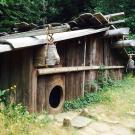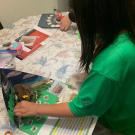Traditional Plank House Village: Resources, Engineering & Social Roles
HSS 4.2.1, HSS 5.1.1, HSS 5.1.2, HSS 5.1.3, 4.VA:CR2.1, 5.VA:CR2.1This unit teaches about the traditional living houses of the Indigenous people of Northern California, primarily the Karuk Yurok, Hoopa, Wiyot and Chilula Tribes. This is a basic overview and summary of the construction and societal makeup revolving around these traditional plank houses. Students will learn about the materials, process and some cultural aspects of plank houses. The lesson expands and applies that knowledge to traditional plank house villages. Activities include classroom discussions and a building project.

